UPDATE: To see the results of using the SIGMA 150-600mm in the field while Plane Spotting, please visit my recent posts on Plane Spotting in Frankfurt: Part I, Part II, Part III, Part IV.
Just one day ahead of my trip to Frankfurt and Vienna, my copy of Sigma’s new 150-600mm lens arrived. I’ve barely had enough time to take it through the process of testing it and comparing it to my Sigma 50-500, but I did manage to spend some time with it tonight prior to packing for the trip tomorrow. With a very rainy and cold day in Michigan, I did not have a chance to take it outside but I did manage to shoot a few images from my deck in between downpours to at least get a sense of what this new lens is capable of.
First Impressions:
Out of the box, it is immediately obvious that this is not your ‘Father’s Sigma’. The build quality is outstanding and attention to detail is impressive. Sigma advertises the lens as being moisture and dust proof, and with all the seals and gaskets I have no doubt that it is. It has a very tight feel (In a good way) to it and you know immediately that you are holding a quality piece of glass. As I compared it to my Sigma 50-500, I immediately noticed the increase in girth and diameter of this lens. It is substantially bigger and quite a bit heavier, but considering the focal length and aperture, this was a requirement.
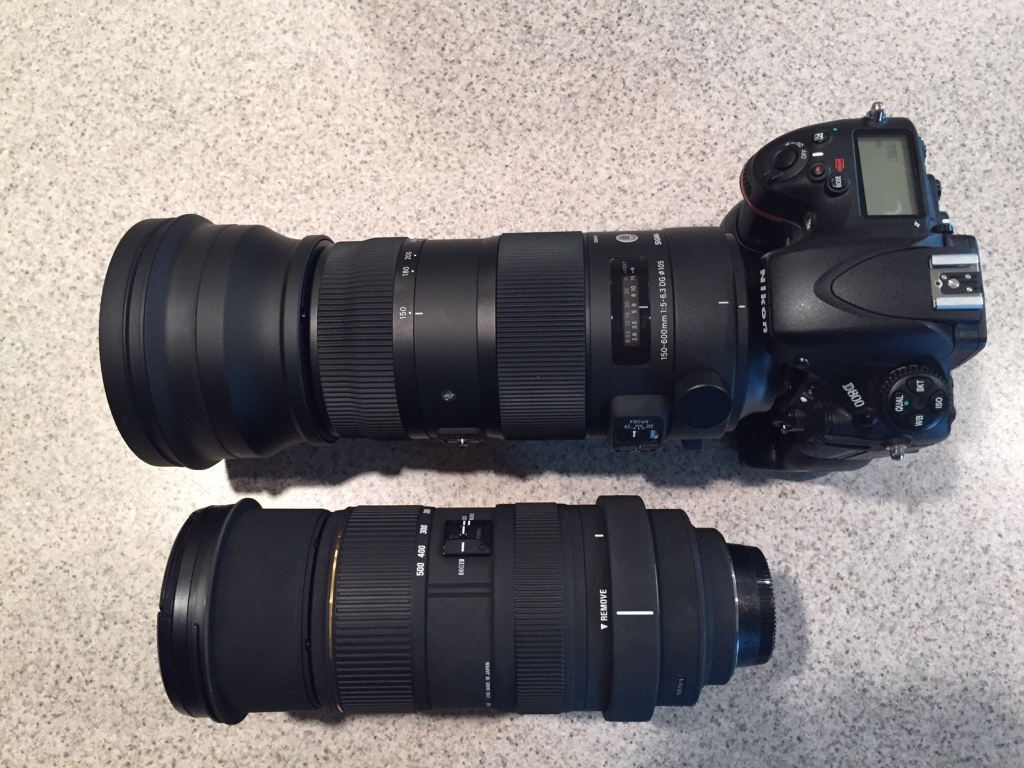
Side by side with the Sigma 50-500, the 150-600 (attached to camera) is quite a bit longer, wider and heavier……However this is not a negative!
The lens is an external zoom lens in that the lens extends and contracts externally to adjust for focal length. This is where the lens really begins to show off…..
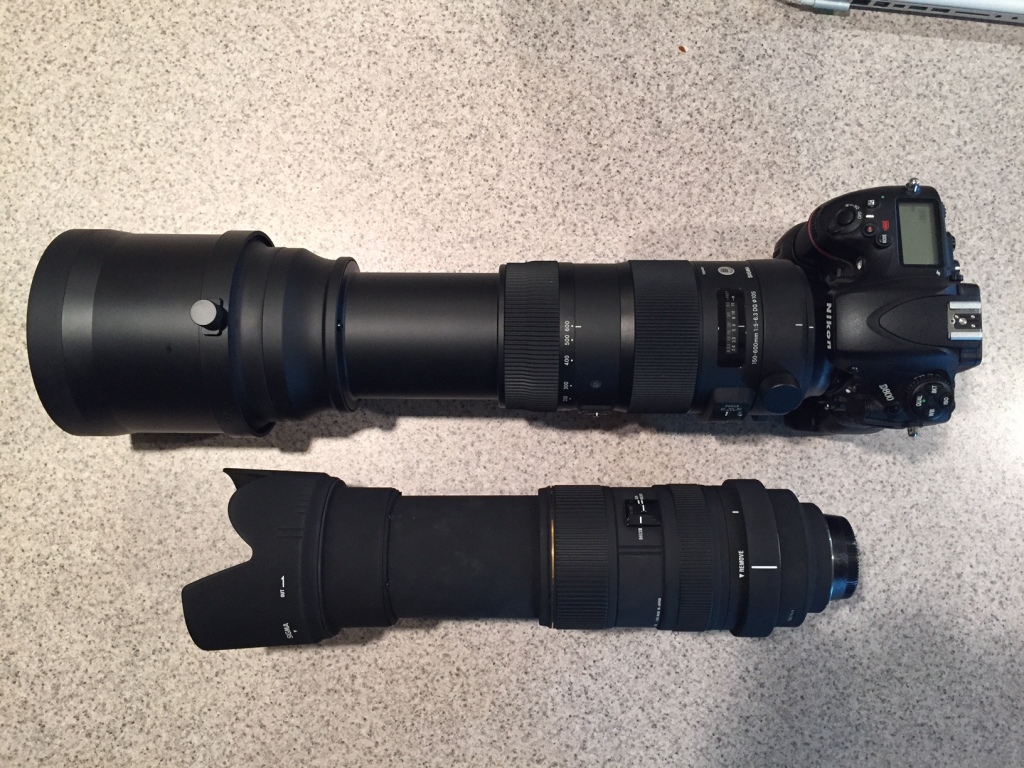
At full extension, the 150-600 begins to demonstrate just how much bigger it is. In this photo, both lens hoods are attached.
With the 150-600 comes several new technological innovations including the ability to custom program certain settings through a USB docking module (sold as an option). Another new feature is the 2 levels of Optical Stabilization, one for general stabilization and one specific for horizontal panning —- which will really come in hand for Plane Spotting and Cheetah Chasing….
The lens also allows you to lock it at certain focal lengths in order to prevent the lens from creeping. Creeping is the movement of the lens barrel when facing upward or downward; the weight of the lens is usually responsible for this. With the new locking mechanism, you can set it and forget it. You can also unlock the lens from the anti-Creeping mode by simply turning the focal length ring or by pulling or pushing the lens tube. Creep is a major annoyance and Sigma seems to have solved it nicely!
The Tripod collar is an improvement from the 50-500 as well. The collar locks into place every 90 degrees, giving you a lot of flexibility when it comes to mounting the lens on a trip or gimbal. Two things that I did not like though is the fact that you cannot remove the tripod collar AND the space between the tripod mounting arm of the collar and the lens tube is not large enough for your fingers. To me this is important because when I grip my 50-500, I use the tripod collar as a handle. With the new tripod collar I have to adjust my grip.
One other minor annoyance that will go away over time is the fact that the 150-600 focal ring rotates in the opposite direction of the 50-500. My muscle memory will need to be relearned but that should only take a short while to remedy.
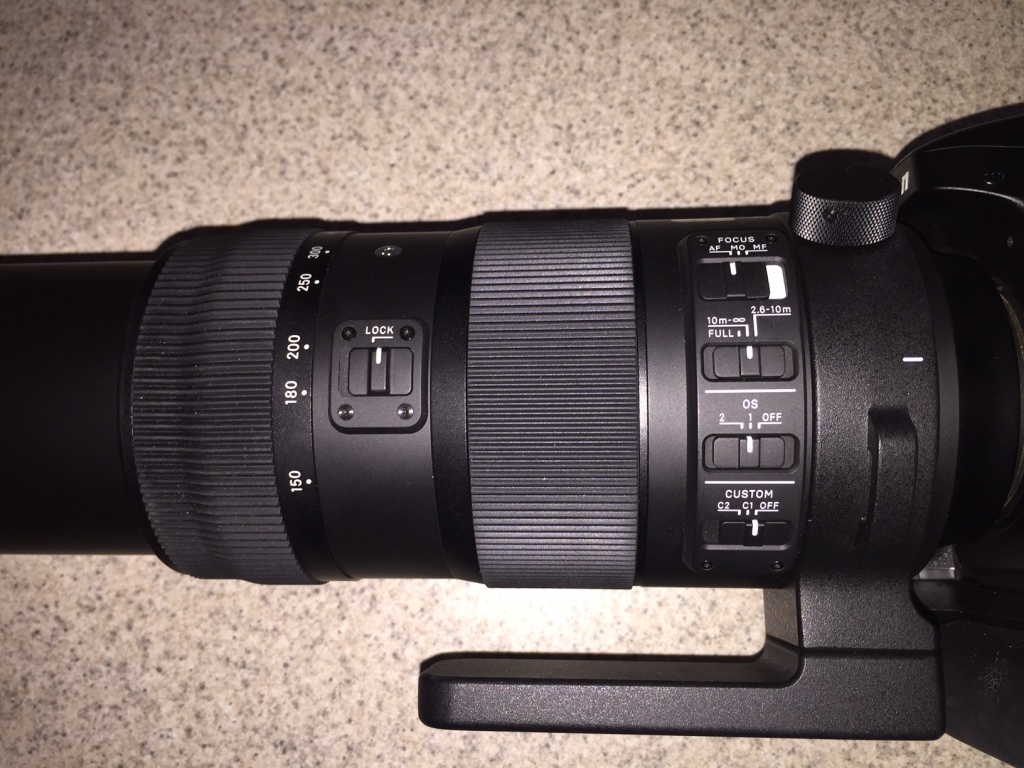
Easy to use control panel covers things such as focus selection and optical stabilization. The space between the tripod mount and the lens could be a bit bigger, but I think there’s a way to ‘invent’ a spacer to increase the space.
The lens hood is quite substantial and really increases the the overall length of the lens. It is entirely made of metal, with a locking screw to hold it in place. The forward edge of the hood is rubberized to help cushion the impact should the lens be bumped into. I thought this was a well thought out feature for a lens designed to take abuse in the field.
As I mentioned earlier, today was not a great day for taking photos with the new lens. I did manage a few shots in between rain showers as well as a few indoor photos. My first impression is that the lens is quite excellent through all focal lengths. My test photos by no means are ‘scientific’ in nature but I like the photos that I took considering that the lens is new to me and my camera, and conditions were not ideal. Each photo below will have a bit of an explanation as to focal length, distance and crop factor….

This tree was about 30 yards from where I was standing. The lens was extended to 600mm and the ISO was 2400 +/-. Not bad considering the focal length and ISO. Low noise amid rainy conditions.
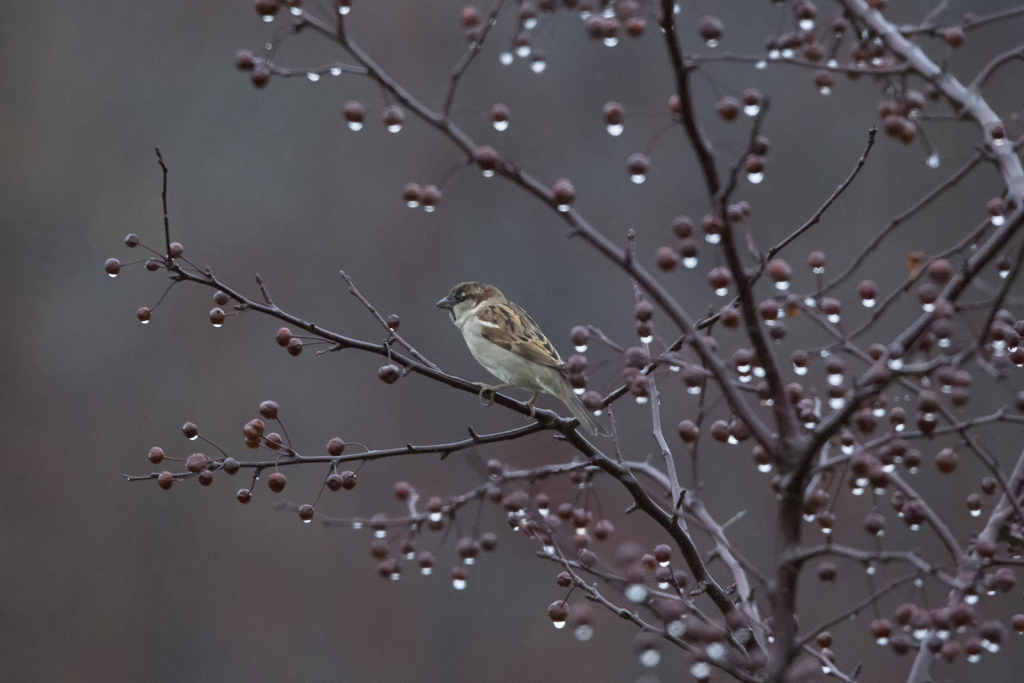
A 50% crop of the same image is still very respectable. Had I used a tripod, the bird would no doubt be very sharp.
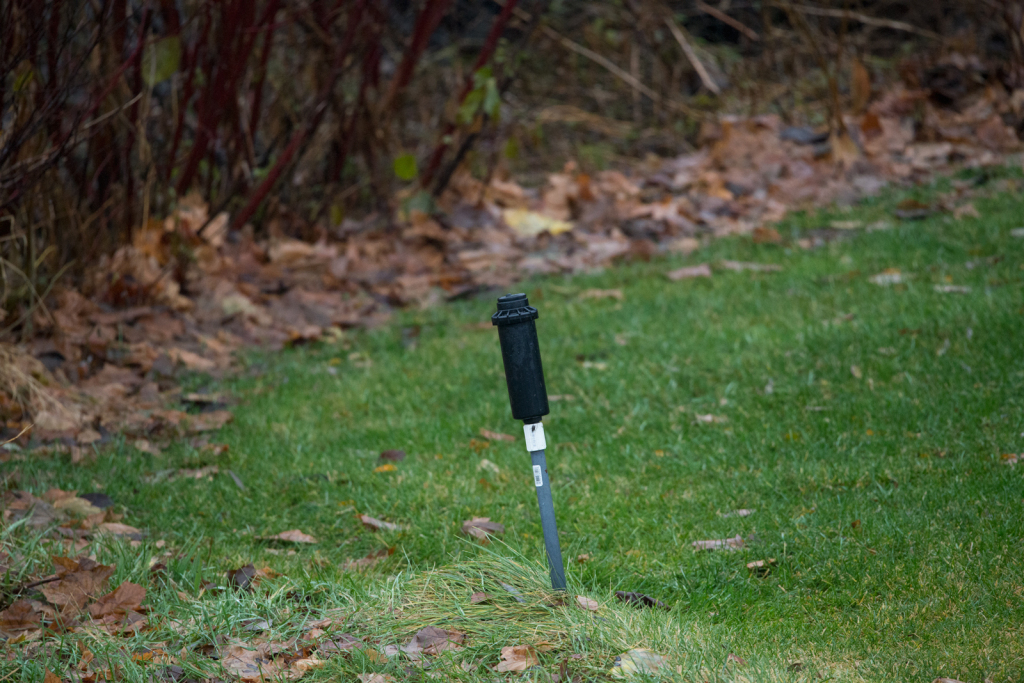
Not exactly a glamorous target, this Sprinkler Head would demonstrate how sharp the lens is. This shot was taken at 600mm and 3200 ISO.
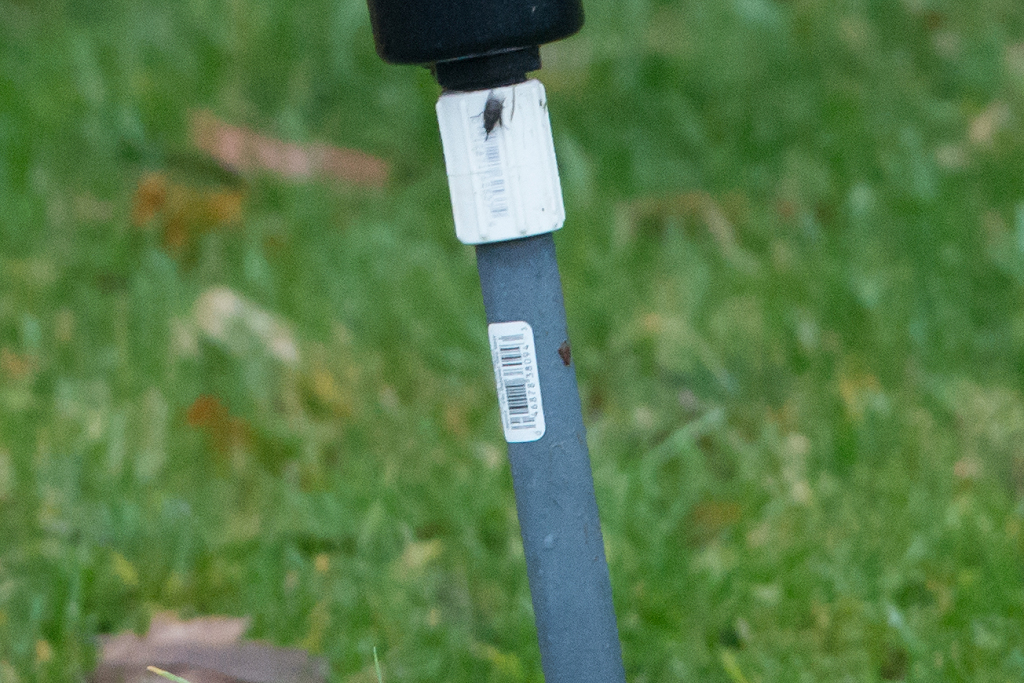
A VERY tight crop reveals the Bar Code number….perfectly legible….the sprinkle head was 30 yards away, focal length was 600mm.

This 2 liter was sitting on my kitchen counter, 15 feet away from me. At 600mm, and 5000 ISO, this shot is tack sharp. 600mm, tack sharp….not often do those words run in the same sentence!
So summing things up, my first impressions of this lens are extremely positive. It seems to be living up to its hype and I’m looking forward to putting it through its paces in Frankfurt this week where the lens will get a heavy dose of plane spotting. I’ll have 3 days to run a couple of thousand images through it and I’ll have a follow up report to talk about how it performed. I’m a bit nervous about leaving my proven 50-500 at home, but I think I may have found the next generation lens to replace it with…..
For more technical details, please take a look at Sigma.com.

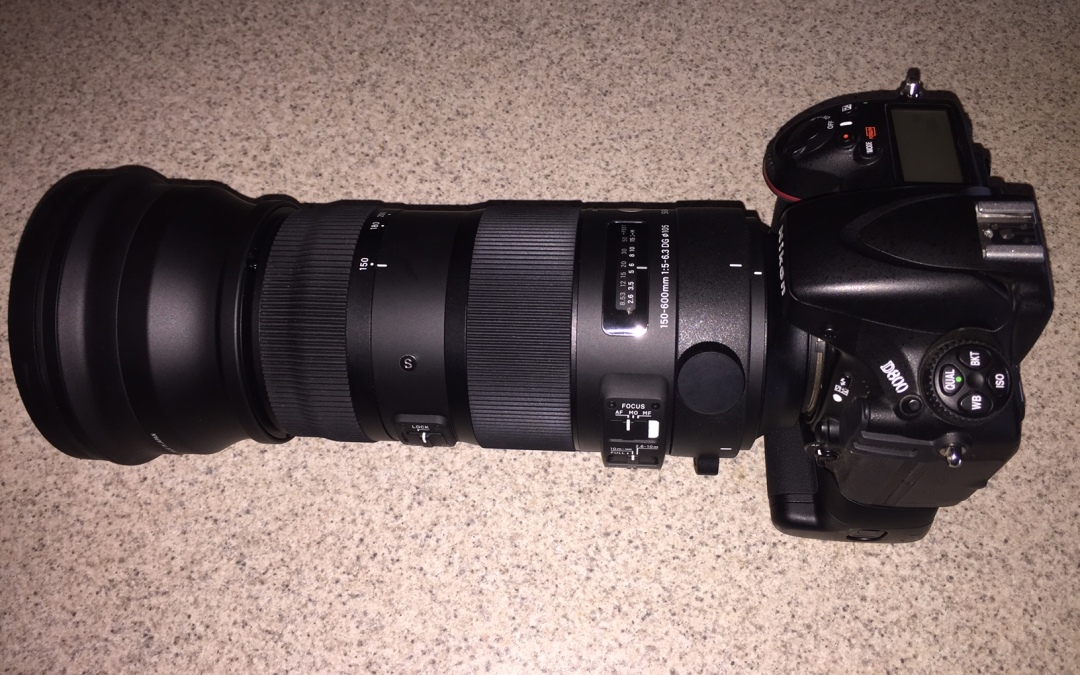
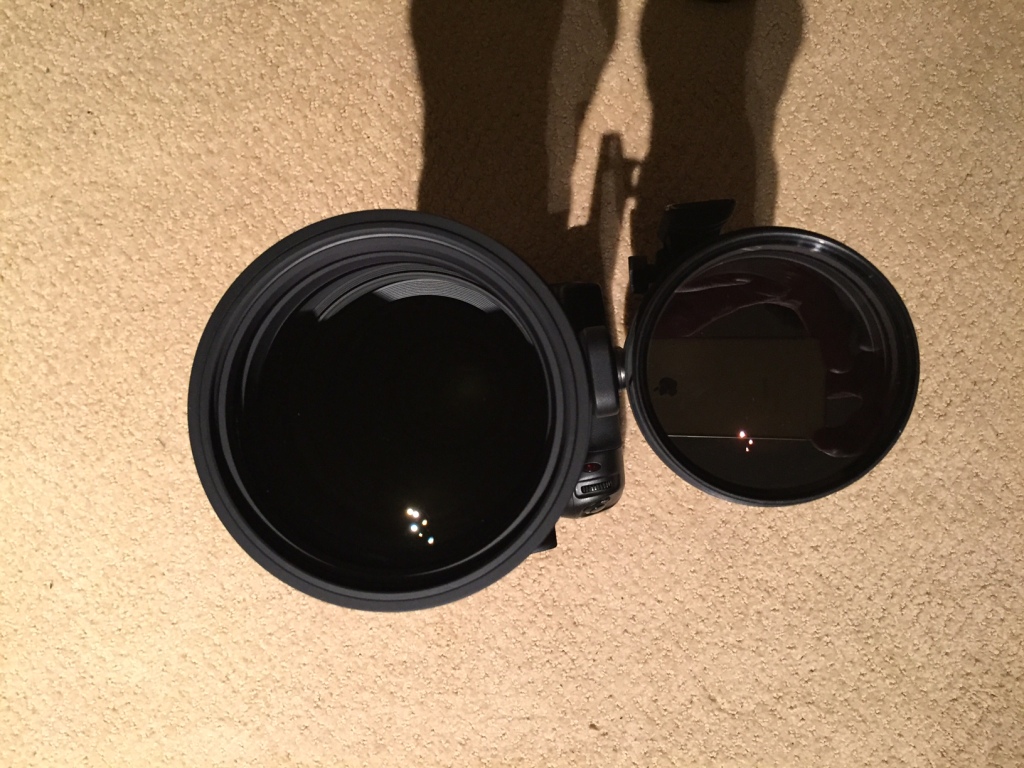
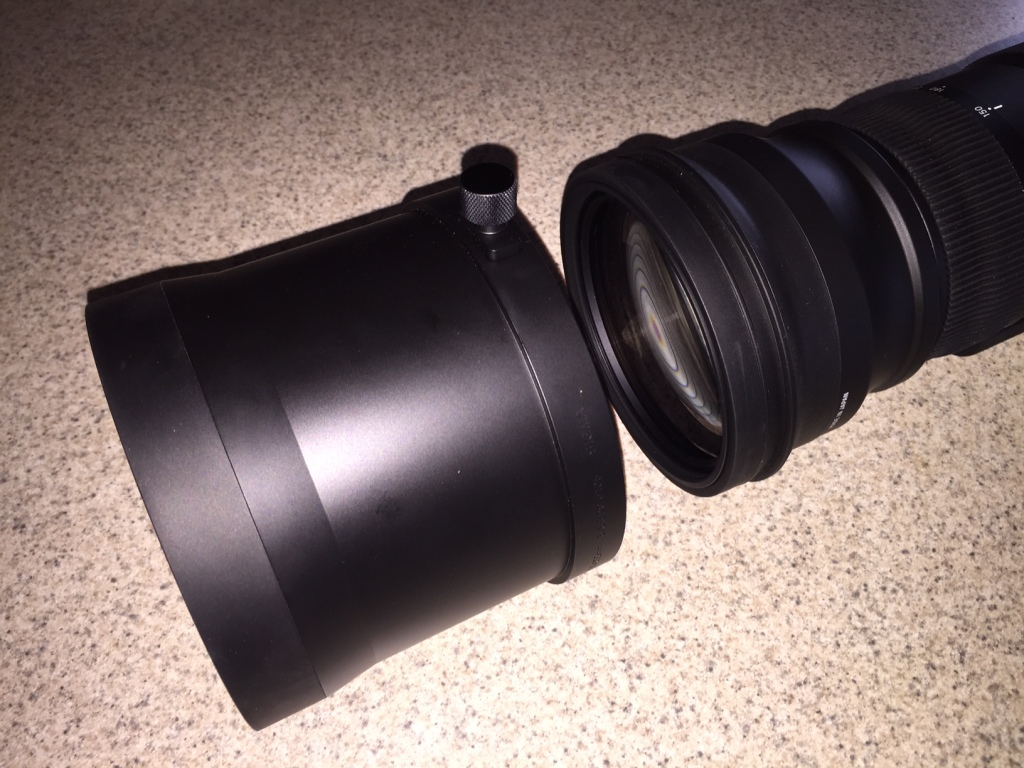



I made a spacer to increase the “pinky” space on my Sigma 150-600mm Sport lens with Sigma mount. I made a batch of them in 1/4″ aluminum, as well as some other customization items to make my long lens more perfect. With the Pinky Spacer, you get a new set of exactly the right sized metric screws. Now I have the perfect amount of space between the tube and the foot of the lens. I use this lens hand-held 99+% of the time. I shot 500+ frames today at a sporting event (single shots, not burst mode). The other accessories are even more amazing and will be on available shortly. Look for Cam Heady.
Thanks. Thats what I wound up doing too. took aluminum tubes and made room for my fat fingers!
Great looking pictures.
What aperture (f stop) did you use while taking those pictures?
f8….sorry for the delay in responding!
Looking forward to seeing how you get on with the lens at FRA. I have pre ordered this lens myself for plane spotting but have yet to see any proper reviews.
You shouldn’t drink Coke Zero, it’s not good for you. You’re better off drinking a limited amount of regular Coke. 🙂
RE: Coke Zero Comment by Ven
Please… this little urban legend has been disproved time and time again. It’s perfectly okay to believe in these unproven myths yourself (there’s no law against irrational behaviour) but I suggest you refrain from advertising your ignorance.